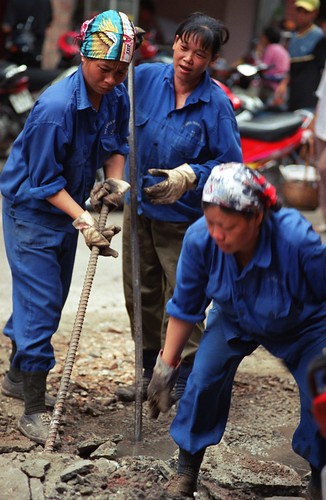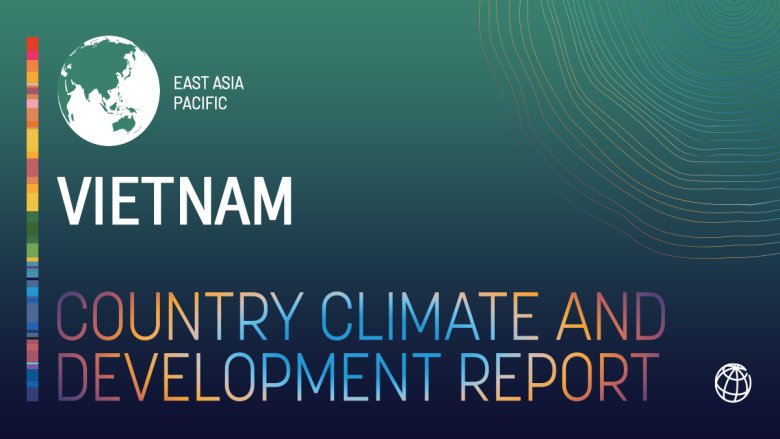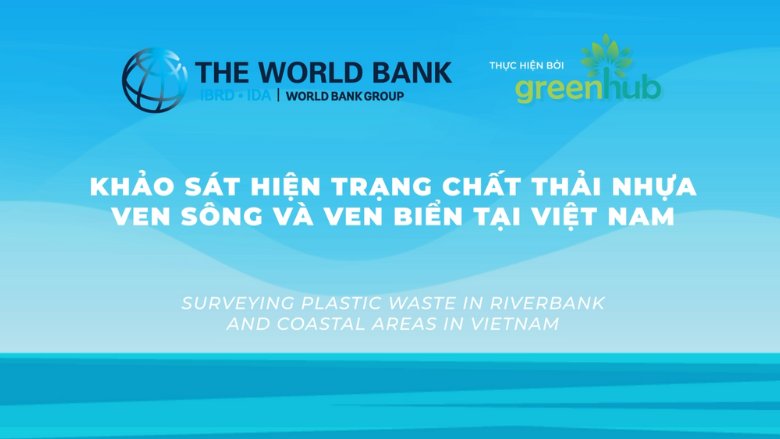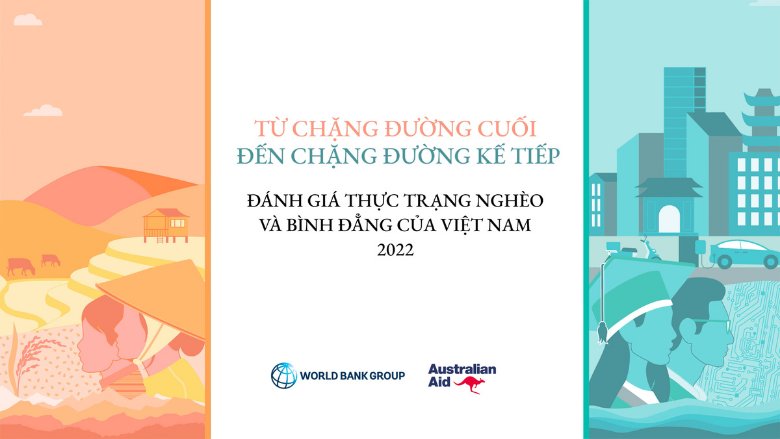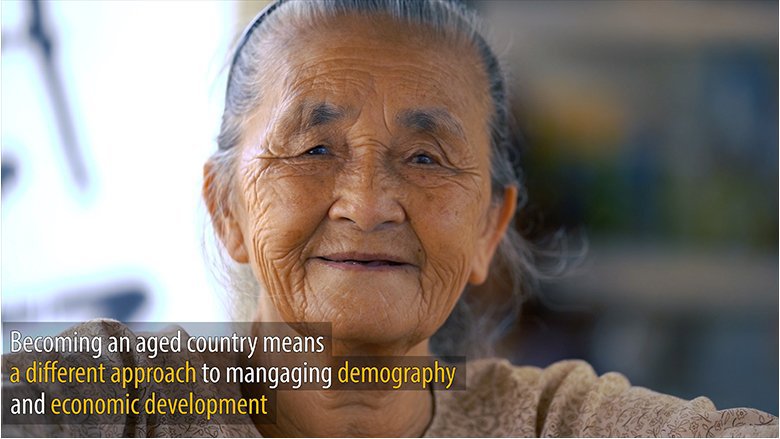As of April 2024, the World Bank has committed US$25,792 million in grants, concessional loans, and credits to Vietnam since 1993. Vietnam’s existing portfolio consists of 13 active projects, with a net commitment of US$2.79 billion. In addition, Vietnam benefits from a large and diverse portfolio of Advisory Services and Analytics (ASAs), 18 of which are currently being implemented, leveraging partnerships and trust funds from development partners.
COVID-19 Response
When COVID-19 hit the country in early 2020, the World Bank Group worked with Vietnam on multiple fronts to support the national response strategy – from health crisis management to fostering a resilient recovery. Through a grant from the Pandemic Emergency Financing Facility, the World Bank helped ramp up testing capacity for 84 laboratories nation-wide, cutting the turnaround time from 24 to 48 hours to four to six hours. Building on global expertise, the Bank issued a series of policy notes on strategies to protect vulnerable groups from the negative impacts of COVID-19 and to stimulate a broad recovery. During COVID-19, the World Bank conducted seven rounds of household high-frequency surveys, and five rounds of Business Pulse Surveys.
Clean Energy
The Vietnam Transmission Efficiency Project significantly boosted the electricity grid in four key economic hubs across the country. The project funded critical infrastructure improvements, leading to a 15 percent increase in transmission capacity. Additionally, it achieved a 20 percent reduction in average operation and maintenance costs per megawatt hour transmitted. System reliability also saw a dramatic improvement, with the average fault duration slashed from 76.2 minutes in 2013 to just 15.4 minutes in 2021. Beyond these immediate benefits, the project paved the way for a more sustainable future. By facilitating the integration of renewable energy sources on a larger scale, it helped reduce greenhouse gas emissions by an estimated 95,000 tons annually. Furthermore, the project's smart grid component laid the groundwork for Vietnam's digital transformation within the power sector.
The Vietnam Renewable Energy Development Project supported some of the first large-scale private-sector led deployments of renewable energy into Vietnam’s power mix. The project provided early-stage investment and technical support to build the requisite capacity and incentives among all stakeholders for scaled-up development. In addition, 19 small hydropower plants were built with a total capacity of 320MW, which supplied an annual volume of 1,260GWh. All these plants followed global best practices on environmental and social risk management, setting new industry benchmarks in Vietnam.
Environment and Natural Resources
The Mekong Delta Integrated Climate Resilience and Sustainable Livelihoods Project, launched in 2016, has helped more than one million farmers in the region transition into more climate-resilient and resource-efficient ways of living. The project leveraged an extensive network of scientists working with farmers to find new production models that best fit the agro-ecological and socioeconomic challenges, and scale them up. It also focused on creating an enabling infrastructure network and improving regional cooperation on water and land management.
With the support of the World Bank, Vietnam mandated the establishment of a carbon market in January 2022. The Partnership for Market Readiness (PMR) Program helped lay the legal foundation and build capacity for using this market-based instrument between 2016 and 2021. The program supported the government in assessing institutional, policy, and technical gaps for using carbon pricing. It also helped develop the main building blocks for carbon pricing including data collection, measuring, reporting, verifying, and crediting process.
Water Management
Building on the success of its predecessor, The Results-based Scaling Up Rural Sanitation and Water Supply Program expanded access to clean water and sanitation for nearly seven million people in Vietnam's 21 poorest provinces (2016-2023). Over 144,000 households gained access to sustainable water through 285,000 new or rehabilitated water connections. More than 69,000 households built improved sanitary latrines with program-facilitated financial support while over 700 communes achieved commune-wide sanitation. Hygiene promotion efforts in nearly 450 communes ensured schools and health clinics maintained proper hygiene standards.
The Vietnam-Irrigated Agriculture Improvement Project, which closed in 2021, has helped modernize the irrigation infrastructure in six provinces in the Central and Northern Mountain regions of Vietnam. The project supported a total area of nearly 95,000 hectares, enabling the application of climate-smart agricultural practices by nearly 252,000 farmer households. These practices helped farmers reduce production inputs, save water, and boost incomes per hectare per crop by nearly six-fold. It was estimated that farming practices supported by the project helped reduce 4.3–4.4 tons of CO2-equivalent per hectare per year. Many lessons learned from the project are now being scaled up by the Ministry of Agriculture and Rural Development.
The Dam Rehabilitation and Safety Improvement Project, which started in 2016, supported the implementation of the Government’s national dam safety program. This project is critical for ensuring water security and protecting downstream regions from potential dam failures. The project helped improve the physical safety conditions of 438 multi-purpose dams, out of a total of 477 dams supported by the project, protecting approximately 4.3 million people in downstream communities. Dam safety management was modernized with the use of geotagging technology and guidelines and procedures towards safety inspection and reporting.
Urban Development and Disaster Risk Management
The Can Tho Urban Development and Resilience Project, launched in March 2016, helps protect 420,000 residents in Can Tho’s urban core from severe flooding that annually causes nearly US$200 million in economic losses. The project focuses on building 14.2 km of flood defenses, upgrading 11.6 km of canals, and constructing 12 km of sewers. It also includes new roads and bridges spanning 10.4 km, connecting urban areas with safer zones. Innovative strategies, such as combining infrastructures and digital systems like the Flood Risk Management Information System and Disaster Responsive Safety Net and Spatial Planning Platform with co-financing from SECO, are being used to enhance urban development and investment planning. By blending technology with traditional approaches, the project establishes a robust defense against flooding, showcasing a sustainable model for urban development and bolstering resilience in Viet Nam. As the largest city in the Mekong River Delta, Can Tho plays a crucial role in the region's transformation.
The Emergency Natural Disaster Reconstruction Project helped four disaster-affected provinces reconstruct and rehabilitate infrastructure and strengthened government capacity to respond to future disaster events. The project improved access to resilient transport, flood prevention and control, irrigation, and drainage infrastructure assets for nearly 1.3 million people. It also addressed institutional gaps for effective disaster risk management and prepared plans for integrated flood risk management in key river basins.
Agriculture and Rural Development
The Viet Nam Sustainable Agriculture Transformation Project proved a triple win. It raised farmers’ incomes, lowering their costs, and creating a greener future by cutting greenhouse gas emissions. In the seven years since the project started in 2015, Mekong Delta farmers working across 182,000 hectares of land reduced their use of inputs by up to 50 percent and boosted their profits by 30 percent. Their sustainable farming practices have helped cut approximately 1.5 million tons of CO2e emissions each year. Inspired by the project’s success, the Vietnamese government, in partnership with the World Bank, has pledged to scale up the project aiming to cover an additional one million hectares and reduce up to 10 million tons of CO2e by 2030 in the Mekong Delta.
Human Capital
Education
The recently completed Vietnam Enhancing Teacher Education Program improved the quality of teaching and learning by delivering online continuous professional development training to more than 530,000 teachers and school principals in general education. Similarly, the Vietnam Quality Improvement of Primary Education for Deaf Children Project developed Vietnam-sign-language based material for primary education, contributing to significantly improving the enrollment and learning results of deaf students.
The Bank also provides strategic advice for Vietnam on how to prepare its workforce for future jobs, including through major investments in universities and advisory services & analytics on skills development for Vietnam. For instance, the Vietnam Support for Autonomous Higher Education Project has helped improve the quality of research, teaching, and management at two leading universities - Vietnam National Agriculture University and Hanoi University of Science and Technology. Nearly half a million students from these two universities and the National Economics University have benefited from the project’s interventions through enhanced learning experience while 18 training programs have been granted international accreditations.
Health
The World Bank supports Vietnam’s efforts to provide quality, affordable health care services for all citizens. As a result, in the north of Vietnam, 13.7 million people—many of them in remote areas—have better access to quality healthcare. The Northeast and Red River Delta Regions Health System Support Project improved treatment capacity for 74 public hospitals at the district and provincial levels by investing in upgrades to the medical infrastructure and training for health workers. Key interventions in cardiology, obstetrics/gynecology, pediatrics, oncology, and trauma are now available at these hospitals, sparing patients the need to seek care far from home. The World Bank is extensively supporting the government to strengthen its health financing functions and thus achieve an efficient and fiscally sustainable health system.
Transport
The Local Road Asset Management Program transformed rural Vietnam, improving the lives of over 11 million people across 51 provinces. New and rehabilitated roads and bridges brought essential services closer to remote communities. Over 1,800 communes, home to Vietnam's most vulnerable populations, now benefit from reduced transport costs and improved access to schools, hospitals, and markets. This project also marked a shift in Vietnam's transport asset management strategy. Previously focused on new construction, the program successfully promoted the importance of routine maintenance. Nearly 51,000 km of rural roads received regular upkeep, safeguarding them against deterioration and natural disasters.
The Northern Delta Transport Development Project upgraded waterway corridors, constructed a maritime-waterways access channel, built a navigation lock, and enhanced port and passenger ferry boat stages. These initiatives resulted in reduced logistics costs, transport time, increased safety, and decreased emissions compared to trucking. The project saved up to 36 hours in cargo transport time on key corridors, reduced waiting time by 20 hours at the Lach Giang estuary access channel, and lowered pollution at ports by up to 36%. Additionally, over 35,000 people, the majority are women, benefited from improved passenger ferry stages, particularly in rural areas where waterways serve as vital access to jobs, education, and social services, ultimately preventing accidents and contributing to the government's transport priorities and climate goals.
Poverty Reduction
Vietnam has made great strides in reducing poverty and improving quality of life for millions. The World Bank has worked closely with Vietnam to address the last mile chronic challenges in poverty eradication. In 2022, the poverty rate was 4.2 percent based on the World Bank lower middle-income poverty line (US$3.65/day, 2017 PPP).
Last Updated: Apr 19, 2024




